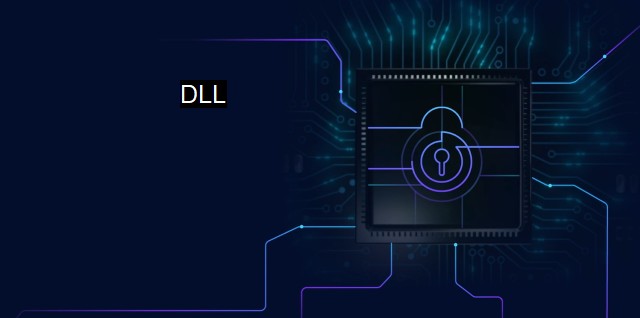What is DLL?
Securing Dynamic Link Libraries: Risks and Precautionary Measures
Dynamic Link Library (DLL) is a central concept in the field of computer security. The DLL system is a method by which Microsoft Operating Systems, including Windows, share code and other resources among multiple applications simultaneously. DLLs essentially reapportion the binary code into reusable parts that can execute numerous tasks. Within the context of cybersecurity and antivirus networks, understanding DLL technology is vital. It is both a critical component for software developers to ensure system functionality but also represents a potential gateway through which malicious attacks may occur.DLL files are executable files that act as shared libraries in Windows. These modules contain data and functions that other programs can call upon and use, being instrumental in the efficiency of computer software. The structure benefits modern computing architecture through its ability to maximize memory usage, reuse code modules, and implement components that facilitate various device operations.
In terms of cybersecurity, DLLs have significant implications. They have the ability to organize and categorize common software routines, and can efficiently execute actions in response to various commands - but illicit parties can exploit this functionality, as DLL files themselves can conduct harmful activities with the same level of operational permission as the hosting user or application.
Among these harmful activities are DLL Injection and "DLL Hell". DLL Injection occurs when a malicious DLL is injected into a program's address space, worming its way into the seemingly unexceptionable functions of the application. The intricate design of the DLL system serves as the perfect cover, making operation hosting nearly undetectable. Once inside, the DLL facilitates respectably detrimental tasks such as password and information theft, application modification, data alteration, or system degradation.
Correspondingly, DLL Hell refers to a circumstance where multiple applications reference the same DLL but require different versions to function correctly. The conflict arises because the system allows only one copy of a specific DLL version at a time. As malicious copies of DLLs supersede authentic ones, programs may cease to work properly, leading to breaches resulting in substantial damage to an infected system.
Preventing certain DLL issues, therefore, forms a significant part of antivirus and computer security measures. Investments in vigilant antivirus networks capable of spotting intrusive DLLs before they manage to embed themselves in a system's operations are vital. This involves monitoring unusual process behavior and identifying unwarranted, unauthorized manipulations in DLLs. Sophisticated security tools now include the ability to compare legitimate DLL files to those holding the same name but present at irregular locations, effectively identifying disguised rogue software.
Developers adapt quickly to DLL threats too, investing in code verification techniques like Authenticode, designed to identify approved libraries and bar suspicious ones from loading. Policies can be applied to limit the DLL load locations and isolate applications in controlled, virtual spaces.
DLLs represent both utility and vulnerability. While their reusable code modules play a crucial role in the smooth functioning of systems, they are susceptible to illicit entry, leading to significant damage in the wrong hands. Hence, the importance of cybersecurity and antivirus systems with effective DLL protections cannot be understated. Cybersecurity and antivirus solutions should incorporate specific capabilities to monitor, detect, and record anomalies related to DLL operations, helping to ensure any intervening malicious operations are intercepted, analysed and neutralized promptly. Therefore, understanding DLL functioning, vulnerabilities and threat countermeasures in cybersecurity is patently crucial in today's digitally-driven world.

DLL FAQs
What is a DLL file?
A DLL (Dynamic Link Library) file is a type of file that contains a set of codes and instructions that can be used by multiple programs at the same time. In cybersecurity and antivirus, DLL files are often used to store system functions and libraries that can be accessed by different software applications.Are DLL files dangerous?
DLL files are not inherently dangerous, but they can be misused by malicious actors to carry out cyber attacks. Hackers may inject malicious code into DLL files, trick users into downloading and installing fake DLL files, or exploit software vulnerabilities to gain access to important DLL files on a system. As a result, it is important for users to keep their antivirus and cybersecurity software up to date to protect against potential threats related to DLL files.Why do antivirus programs flag DLL files?
Antivirus programs may flag DLL files as potentially harmful if they contain code or instructions that match known malware signatures or exhibit suspicious behavior. In some cases, antivirus software may also flag DLL files that have been tampered with or modified to include malicious code. While this can result in false positives, it is important to investigate any alerts related to DLL files to ensure that they do not pose a threat to your system.How can I fix DLL errors on my computer?
DLL errors can occur when a necessary file is missing, corrupted, or outdated. To fix these errors, you may need to update your operating system, reinstall the program that is causing the issue, or download a new version of the DLL file from a trusted source. You can also use a DLL repair tool or consult with a cybersecurity professional for assistance in resolving DLL-related issues on your computer.| | A | | | B | | | C | | | D | | | E | | | F | | | G | | | H | | | I | | | J | | | K | | | L | | | M | |
| | N | | | O | | | P | | | Q | | | R | | | S | | | T | | | U | | | V | | | W | | | X | | | Y | | | Z | |
| | 1 | | | 2 | | | 3 | | | 4 | | | 7 | | | 8 | | |||||||